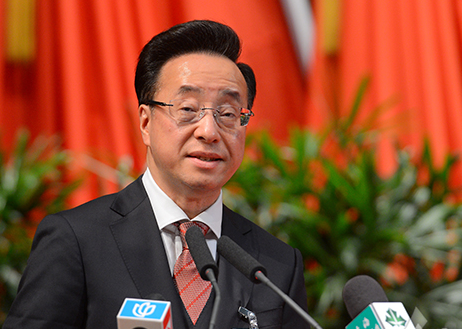By Tu Haiming
China and the United States have been ramping up high-level talks in recent months. On Sept 27, Chinese Foreign Minister Wang Yi met with US Secretary of State Antony Blinken in New York. On Sept 20, Vice-Premier He Lifeng met with Jay Shambaugh, undersecretary for international affairs at the US Department of the Treasury, in Beijing. On Sept 6, Wang met with John Podesta, the White House’s senior adviser on climate policy.
While Washington makes no secret of its “Taiwan card” strategy and constantly creates economic hurdles for China, engagements and communication between the two countries have been on the rise recently.
The argument that high-level exchanges conducted with Joe Biden’s lame-duck administration are futile is flawed.
First, US foreign policies are not monopolized by the president; rather, they are largely shaped by the US Congress. Second, the Democrats and Republicans are highly consistent in their perception of China and their China policy; they differ only in the approach toward China.
US Vice-President Kamala Harris’ recent hawkish remarks against China have raised concerns about worsening Sino-US relations if she wins the election.
In reality, her rhetoric on China is part of politicking. She is likely to carry on the Democratic Party’s policy toward China if she wins. Being a China hawk is politically correct now in the US, especially in the Rust Belt regions, amid accusations of China “taking away their jobs”.
If Donald Trump is elected, it is likely that Washington’s China policy will be adjusted. Nonetheless, the two sides will need to maintain communications to prepare for the tough challenges ahead.
As the US awaits a new administration, debate about Washington’s future China policy is heating up in US academic and strategic circles, with some proposing to “manage” the competition with China and others suggesting to “prevail over” China. Narratives about “prevailing over” China include preventing China from “imposing its own will” on the US and its allies; forcing China to abide by the US-dominated rules-based international order; and radically reshaping China.
These narratives only encompass US perspectives on Sino-US relations. However, China perspectives must also be taken into account for bilateral communications to continue, which serve three major purposes.
First, communications will help Washington to have a correct understanding of China. During their Sept 27 meeting, Wang bluntly told Blinken that “the United States should not always approach China with two faces: On the one hand encircling and suppressing China brazenly, and on the other hand, having dialogue and cooperation with China as if nothing is wrong”. Wang couldn’t have put it better when he criticized Washington for “acting willfully as it sees fit from a position of strength or using previous mistakes as excuses to make more mistakes”. Indeed, Washington should take a hard look at its arrogance and learn to treat Beijing as an equal in the communications process.
Second, they help Washington to effectively manage differences between the two sides. When China launched an intercontinental ballistic missile into the Pacific Ocean on Sept 25, Washington neither protested against nor sensationalized it as the US military was informed about the test-fire beforehand. Washington was satisfied with China’s notification. Effective communications really do help to prevent unintended conflict.
Third, they create opportunities for cooperation. Whereas the risks of conflict in the South China Sea and across the Taiwan Strait are apparent, there is plenty of room for bilateral cooperation in areas such as combating climate change and drug trafficking, which can be conducted without becoming embroiled in the worst possible forms of Sino-US tensions. Given their importance, more high-level bilateral talks are needed.
Despite the bipartisan hawkishness toward China, it is believed that there will be no fundamental change to Sino-US relations in the foreseeable future whoever is in charge of the White House next year.
Bilateral trade between the US and China reached $664.5 billion last year, reflecting the deep integration of the two economies. What’s more, there are more than 70,000 American enterprises operating in China, and bilateral economic collaboration sustains 2.6 million jobs in the US. Despite the lingering rhetoric of “decoupling” and “derisking”, and the “overcapacity” accusations, this data attests to the unbreakable economic and trade ties between the two sides.
Since 2018, the US has launched various campaigns to contain China in trade and technological innovation. Though they have created challenges for China, none of them have achieved their desired purpose. For instance, the tariffs imposed on Chinese imports have not only resulted in Chinese firms relocating to Southeast Asia and Mexico but have also backfired on the interests of US firms in China.
Concerning the boomeranging of Washington’s China policy, some people in the US have called for moves to improve bilateral economic and trade ties. The US-China Economic Working Group, which was established in September 2023, has held five meetings, indicating that both sides have attached great importance to communications and resolving differences through dialogue.
Xia Baolong, director of the Hong Kong and Macao Work Office of the Communist Party of China Central Committee, has repeatedly noted that both China and the world have changed significantly. Hong Kong has to constantly adapt to changes to open up new horizons for its development amid evolving external circumstances. Recent high-level engagements shed light on the “variables” and “non-variables” in Sino-US relations, and Hong Kong should make a move to target the opportunities brought about by the variables.
The author is vice-chairman of the Committee on Liaison with Hong Kong, Macao, Taiwan and Overseas Chinese of the National Committee of the Chinese People’s Political Consultative Conference, and chairman of the Hong Kong New Era Development Thinktank. The views do not necessarily reflect those of Bauhinia Magazine.
https://res.youuu.com/zjres/2024/10/13/tB0f3p4jbsTQP2rEEC5HOqZHZL0nSN3CN3n.png











掃描二維碼分享到手機














